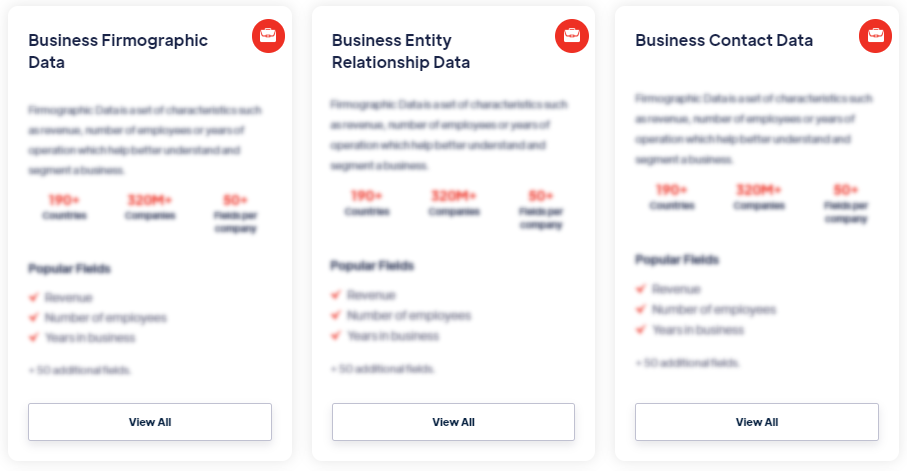Best
Polygon Data
Products
Polygon data refers to geometric data that represents closed shapes with multiple sides, known as polygons. These polygons are commonly used to represent areas, boundaries, or regions on a map or in a geographic context. Read more
Our Data Integrations


Request Data Sample for
Polygon Data

Browse the Data Marketplace

Frequently Asked Questions
1. What is Polygon Data?
Polygon data
refers to geometric data that represents closed shapes with
multiple sides, known as polygons. These polygons are commonly
used to represent areas, boundaries, or regions on a map or in a
geographic context.
2. How is Polygon Data represented?
Polygon data is typically represented using coordinates that
define the vertices of the polygon. Each vertex is a pair of x
and y coordinates that describe the position of a point in a
two-dimensional space. These vertices are connected in a
specific order to form the edges of the polygon, and the last
vertex is connected to the first vertex to close the shape.
3. What are the applications of Polygon Data?
Polygon data has various applications in geographic information
systems (GIS), mapping, and spatial analysis. It can be used to
represent administrative boundaries, land parcels,
neighborhoods, zoning areas, geographical features, and more.
Polygon data enables spatial analysis, such as determining the
area or perimeter of a region, calculating distances between
polygons, overlaying different datasets, and performing spatial
queries.
4. How is Polygon Data created or acquired?
Polygon data can be created through digitization, where
existing paper maps or satellite images are manually traced to
capture the polygon boundaries. It can also be generated using
remote sensing techniques, such as satellite imagery or aerial
photography, combined with image processing and spatial analysis
algorithms. Additionally, polygon data can be acquired from
authoritative sources, government agencies, open data
initiatives, or commercial data providers.
5. What attributes can be associated with Polygon Data?
Polygon data can be associated with various attributes that
provide additional information about the polygons. These
attributes may include names, identifiers, classification codes,
land use information, population statistics, or any other
relevant data that describes the polygons and their
characteristics.
6. How is Polygon Data used in analysis and visualization?
Polygon data is essential for visualizing and analyzing spatial
patterns and relationships. It enables overlaying multiple
datasets to identify spatial intersections, performing spatial
queries to extract specific areas of interest, conducting
spatial statistics to analyze patterns, and generating thematic
maps to visualize data distribution across regions. The
combination of polygon data with attribute data allows for
comprehensive spatial analysis and decision-making.
7. What are the challenges in working with Polygon Data?
Working with polygon data can present challenges such as data
quality issues, inconsistent data formats, varying levels of
detail or accuracy, and data integration challenges when
combining multiple datasets. Additionally, managing and
processing large polygon datasets can be computationally
demanding. Addressing these challenges requires data quality
assurance, data integration techniques, appropriate spatial
analysis tools, and consideration of data limitations and
uncertainties.
â€
